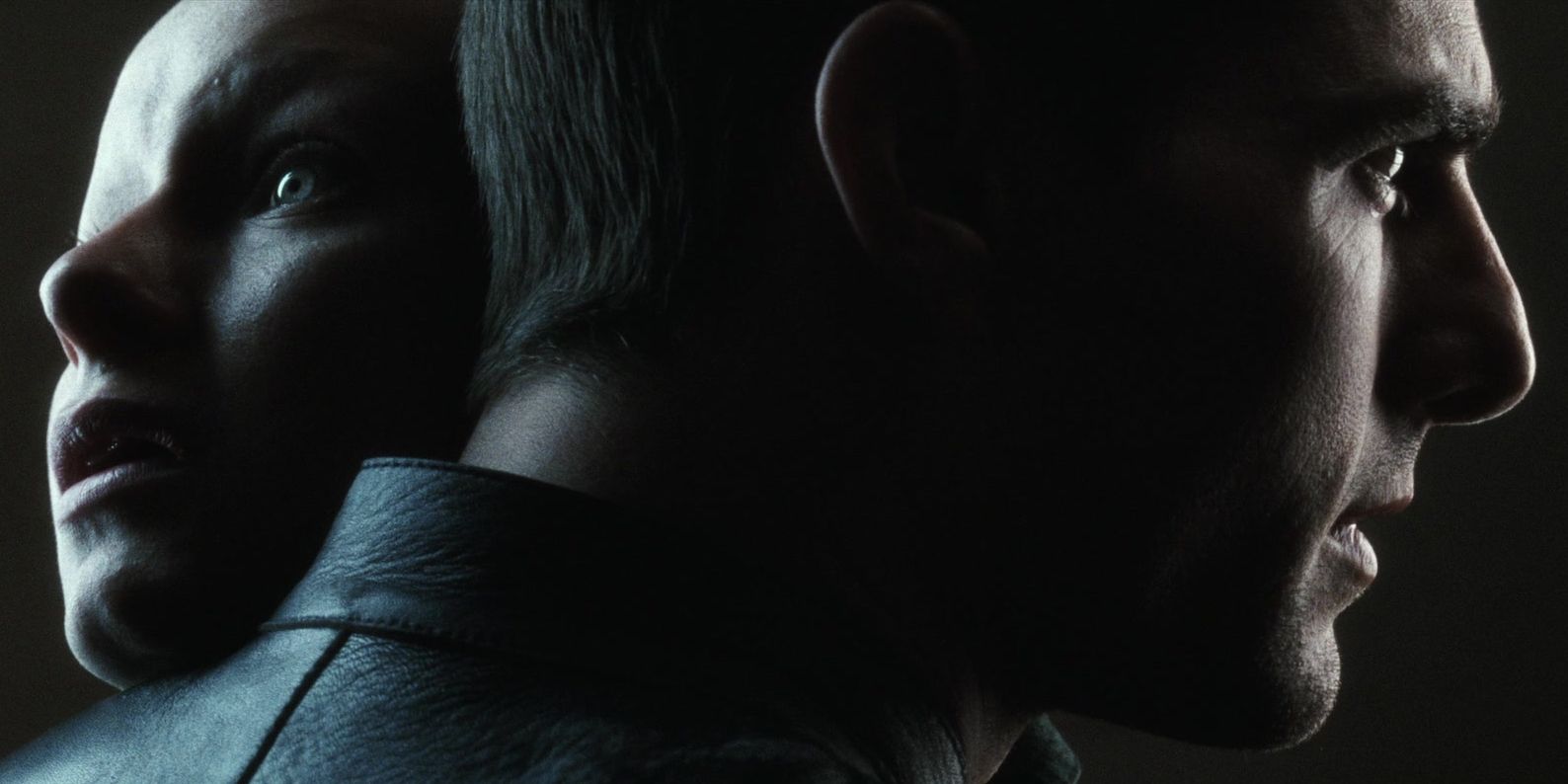The sweeping orchestrations and camera movements of Steven Spielberg‘s films are why we most closely associate his great works with the very concept of “movie magic.” But his 2002 dystopian sci-fi thriller, Minority Report, flips that concept on its head. Minority Report stars Tom Cruise as William Anderton, a detective working in a futuristic Precrime division, where he can receive transmitted premonitions of murders about to come true and must use his skills to find out exactly where they will happen. Anderton is great at his job until his name comes up as an accused, and he is thrown into a moral dilemma regarding the essence of fate and determinism in an attempt to clear his name.
Being one of Spielberg’s darkest, strangest movies yet, the visual style of Minority Report reflects that. It is one of Spielberg’s most distinctive-looking films, with a harsh array of lighting and color choices that really challenge the viewer the first time around. To put it bluntly, Minority Report is an ugly movie, but those of us who love it know that is actually one of its greatest assets.
Steven Spielberg Wanted ‘Minority Report’ To Be His Ugliest Movie Yet
Spielberg reunited with cinematographer Janusz Kamiński for the sixth time on Minority Report. After Schindler’s List, Kamiński became Spielberg’s go-to guy, and the two have worked together on every Spielberg movie since 1993, so it goes without saying that they have developed an efficient shorthand with one another. For Minority Report, Spielberg told Kamiński that he wanted it to be “the ugliest, dirtiest movie” he had ever made.
Kamiński rose to the task, crafting a uniquely overexposed, washed-out visual palette that contrasts greatly with the warm, welcoming style of Spielberg’s biggest hits. Kamiński’s trademark back-lighting and shooting against windows with pools of light pouring through already give Spielberg’s later works a more muted style than his earlier genre pictures, and with Minority Report, they take that to the extreme. The look was accomplished by overlighting nearly every scene and putting the film through a chemical process called bleach bypassing, which keeps vibrant colors out of the image. This approach leaves Minority Report looking borderline black-and-white in some scenes. The actors appear ghostly and pale, the fluorescent lights are overbearing, and any color that does come through feels blue-shifted. All of these are strong choices that perfectly reflect the narrative, tone, and blend of genres Spielberg wanted to convey.
‘Minority Report’s Unique Blend of Noir and Sci-Fi Is Reflected in the Visual Style
Minority Report is an ugly movie insofar as the world it depicts is ugly. The film is as much a noir story as it is a work of science fiction, and in both cases, it draws from the most bleak archetypes of each genre. Anderton is a drug-addicted detective who has lost his family, and over the course of the film he comes to realize that his life’s work has been dedicated to locking people away for life for crimes they may have never committed. The flaws in the Precrime system and the fugitive-on-the-run plot reflect a distorted and ugly system of justice and a cynical worldview, typical of noir stories about detectives.
But the film is also hard science fiction in many ways. From the technology behind Precrime to the futuristic shopping malls and rampant drug usage, Minority Report depicts a dark, digitized future that is based around consumption as a distraction from the harsh realities of life; the movie matches this tone with its stark approach to lighting and color. Minority Report is not comforting to look at, because the world of Minority Report is anything but comfortable.
When Color Fills the Frame in ‘Minority Report,’ It Holds a Lot of Meaning
There are only a couple of instances in Minority Report where the film takes on a more traditional color palette. The audience gets a break from the relentless, fluorescent look of the movie when Anderton has a dream of the last day he and his son spent together. The second is at the very end of the film, when Precrime has come to an end and the Precogs are living freely in an undisclosed location. The colors in both of these sequences get across that the world is in a different state—the dystopian qualities of the Precrime program and the harsh living conditions of the futuristic society are reflected by the stark, colorless style. When the colors come back, it means that the world is a better place, as Anderton’s last great memory—a day with his son at the pool—is marred by tragedy but remains full of vibrant color. And the Precogs, finally out of the mental prison they inhabited for years, see color in their world once again.

Related
The 10 Best Steven Spielberg Movies With Great Acting, Ranked
Many great actors have done their best work under Spielberg’s direction.
The final shot of the Precogs, colorful and whimsical with Williams’ score playing underneath, sweeps far into the sky. It is one of the only times the film pulls off that classical Spielberg movie magic sort of shot, because it is the first time the world of Minority Report deserves that reverence. The rest of the film is unforgiving and uncompromising in its vision of a bleak, sci-fi reality, but in the end, that feeling of wonder and hope and awe that so many Spielberg movies are known for comes back into the fold. The ugliness is gone.
Source link





